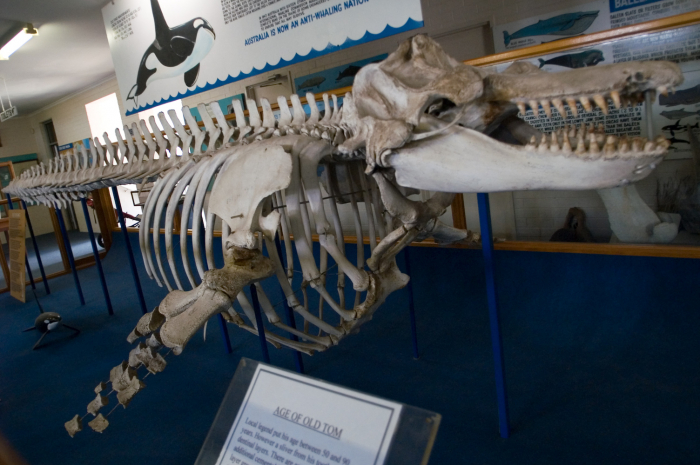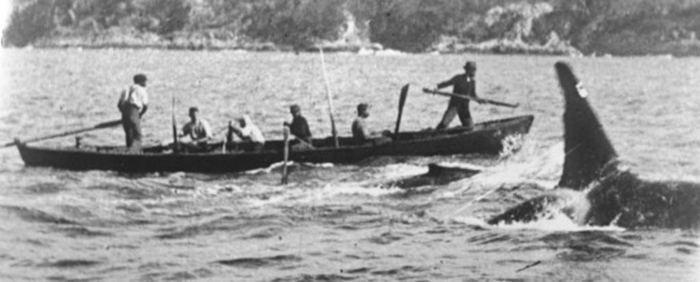In the nineteenth century the coastal town of Eden, Australia, was one of the epicentres of whaling. It fronted (as it still does) onto Twofold Bay, where between winter and spring the southern right whale used to appear, ready for mating. This huge cetacean moves very slowly, its body size prevents it from springing and leaping. It was therefore the perfect prey for whale hunters, who were able to obtain many barrels of oil from a single mammal; during one hunting season, as many as 22 specimens were caught, and they guaranteed enough income for the entire year to the families of Eden. But every winter, together with the whales, even the school of killer whales arrived, and wanted the same thing as the fishermen. At the beginning the fishermen, feeling in competition with them, tried to chase the killer whales away. But, as far as we know, things began to change from about 1840, when the whalers started to recruit some aborigines of the Thaua tribe as harpooners. These natives had actually practised whale hunting for thousands of years before the European arrived, and had made a “deal” with the killer whales. When the killer whales intercepted a group of migrating whales, they surrounded them and pushed them into Twofold Bay, by the coastline. Here a male killing whale, the leader, swam to the dock to alert the whalers, leaping and slapping the water with its tail. The men jumped on the boats and easily harpooned and killed the whales. In return for this help, the whalers established the so-called “law of the tongue”: they used to fasten the carcass of the whale they had just killed to a boat or a buoy and left it in the water all night so that the killing whales could reclaim their share of the spoils – namely, the cetacean’s huge lips and tongue for their meal. The killer whales did not touch the rest of the body, which contained the fat and bones that were precious for the fishermen. The killer whales became fundamental partners for the citizens of Eden, they were freed as soon as they got caught in the fishing nets and it is said that they even kept the dangerous sharks away from the whalers’ fragile lifeboats. The male killing whale that mostly interacted with the men drawing their attention was seven metres long and weighed about six tons: it became well-known by the nickname of Old Tom. This cooperation lasted for almost a century. In 1923 someone called John Logan, a retired breeder, went hunting with third-generation whaler George Davidson. As he used to do, Old Tom pushed a small whale towards the men and they killed it. But a storm was approaching, and the season had really been meagre: Logan, being afraid that that whale may be the last of the year, decided to break the law of the tongue for the very first (and last) time. He used his harpoon to push Old Tom, that was properly demanding its reward, away from the prey. With a badly executed blow, without really wanting it, Logan yanked off two of the poor killing whale’s teeth. When wounded Old Tom swam away from the boat, Logan whispered: “Oh my God, what have I done?”. The gums of Old Tom became infected and during the following years the killing whale had to struggle harder and harder to feed; on September 18, 1930 it was found beached near Eden. It had died of consumption and starvation. From that moment on, its school disappeared and never returned. Today, the skeleton of Old Tom is exhibited at the Eden Killer Whale Museum, in everlasting memory of the weird, but fruitful alliance between men and killer whales.


